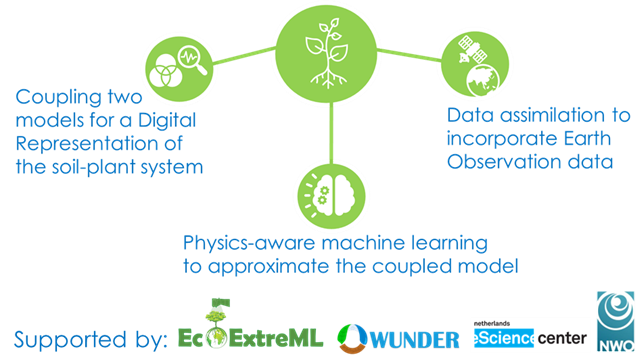
EcoExtreML: Accelerating Process Understanding for Ecosystem Functioning under Extreme Climates with Physics-Aware Machine Learning
Droughts and heatwaves impact ecosystem water, energy and carbon fluxes, and jeopardize terrestrial ecosystem carbon sequestration. Remote sensing of fluorescence and plant-hydraulics-based vegetation models are state-of-the-art approaches to monitor and predict drought responses of ecosystem functioning. However, the disciplinary disconnect between the two approaches has hazed the full potential of synergizing them. This project will couple the vegetation photosynthesis model (SCOPE) with the soil moisture model (STEMMUS, considering dynamic root growth), synergized with Earth-Observation data, to understand how water-carbon dynamics of ecosystem vary with variable environmental and climate stress.
The bottleneck in applying STEMMUS-SCOPE globally is its expensive computational cost. As the first step, the coupled STEMMUS-SCOPE model will be exposed to Basic-Model-Interface, serving as the first level acceleration. Second, a physics-aware machine learning emulator, based on a limited number of STEMMUS-SCOPE runs, will be developed. Furthermore, to address the ‘data-gap’ issue of satellite reflectance products (i.e., revisit-time (5–27days) and cloudy condition), OpenDA will be deployed to assimilate multiscale/multi-sensor data to generate spatiotemporally continuous information on ecosystem functioning. This project will develop an open digital twin of soil-plant system (see Figure 1) and provide a variety of new opportunities for Earth-Observation for retrieving higher-level products like root-zone-soil-moisture and belowground-carbon-allocation, besides land-atmosphere gas exchanges.

Figure 1 Three main components of a soil-plant digital twin.

